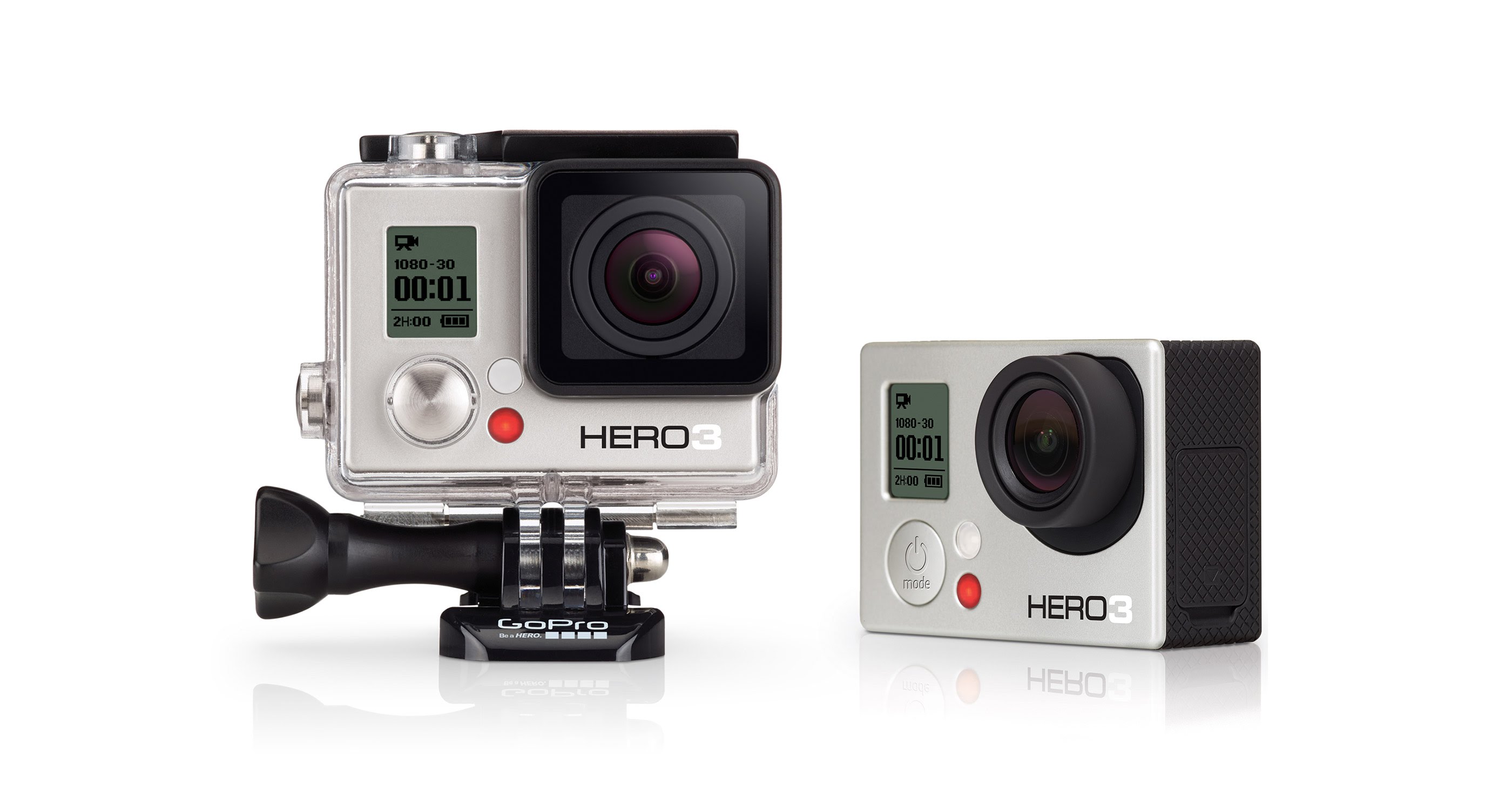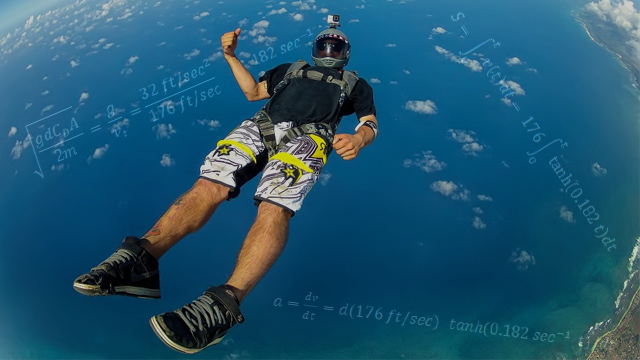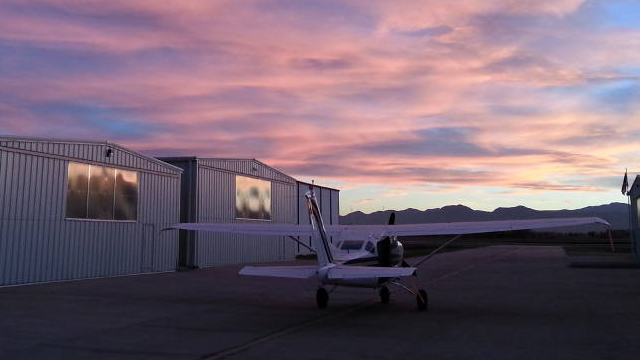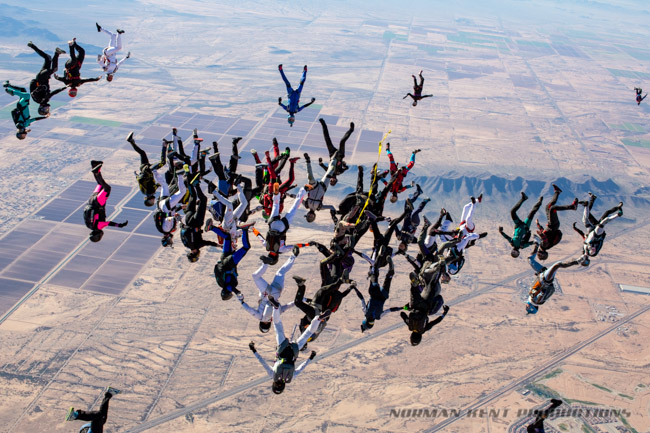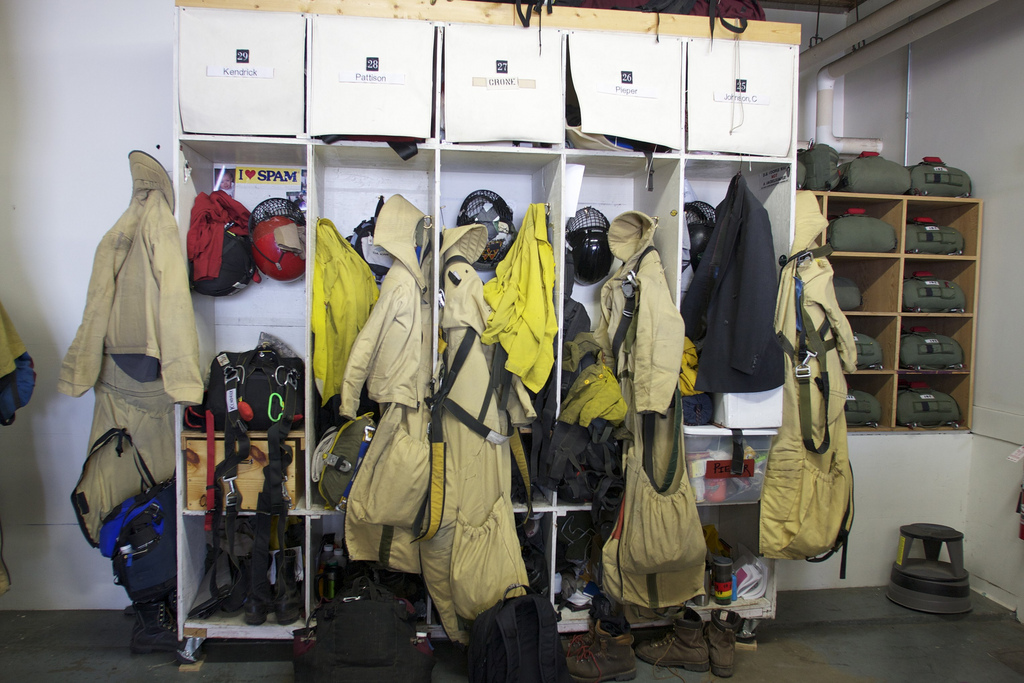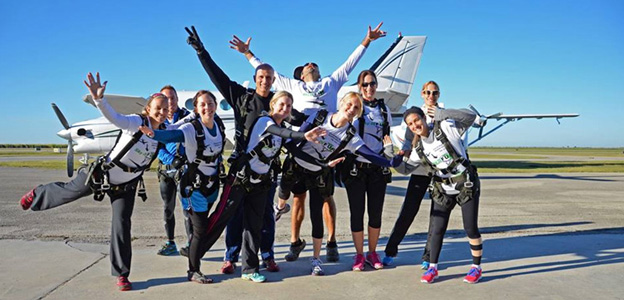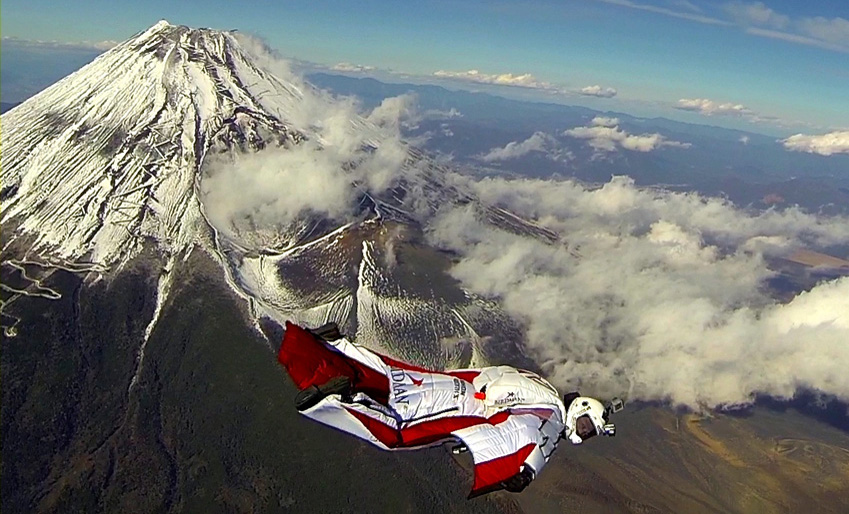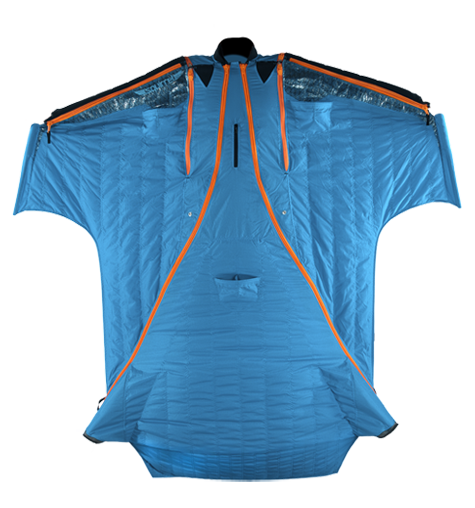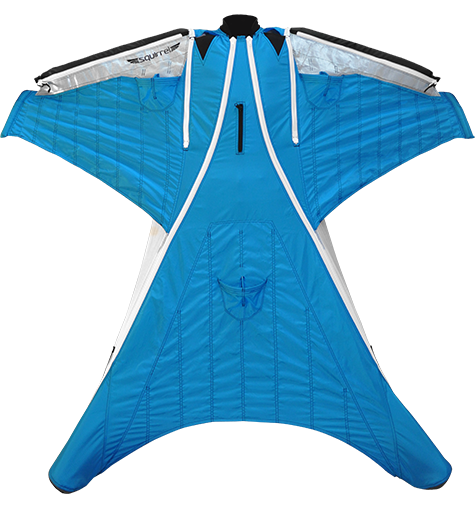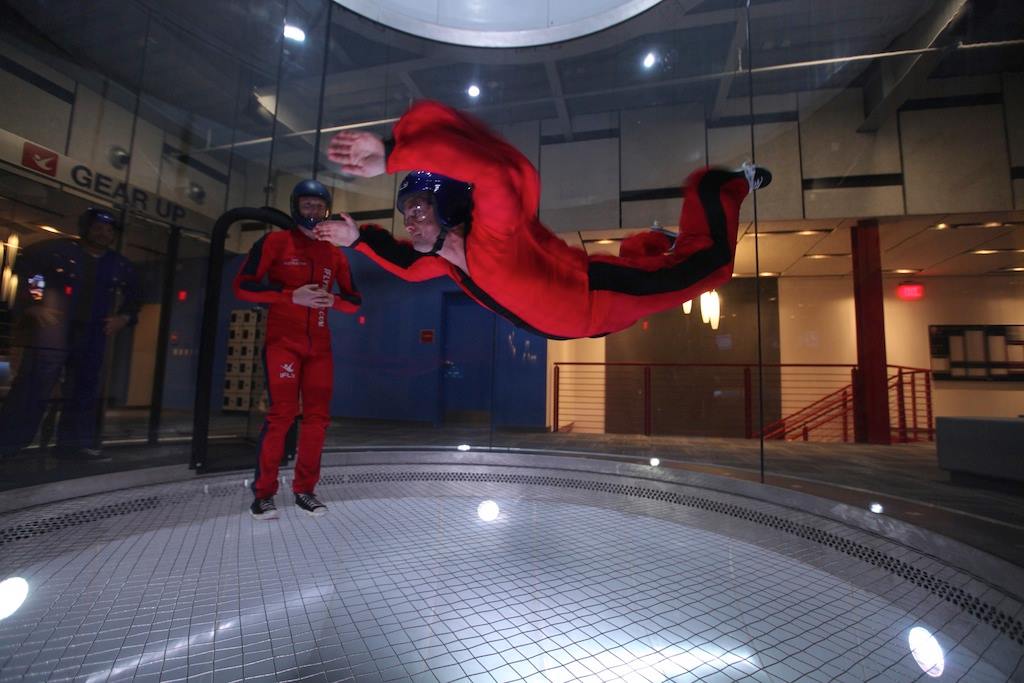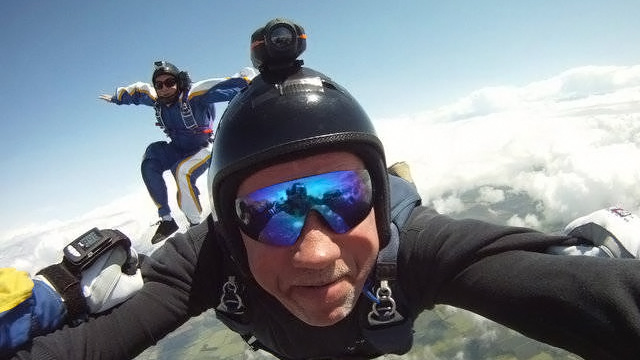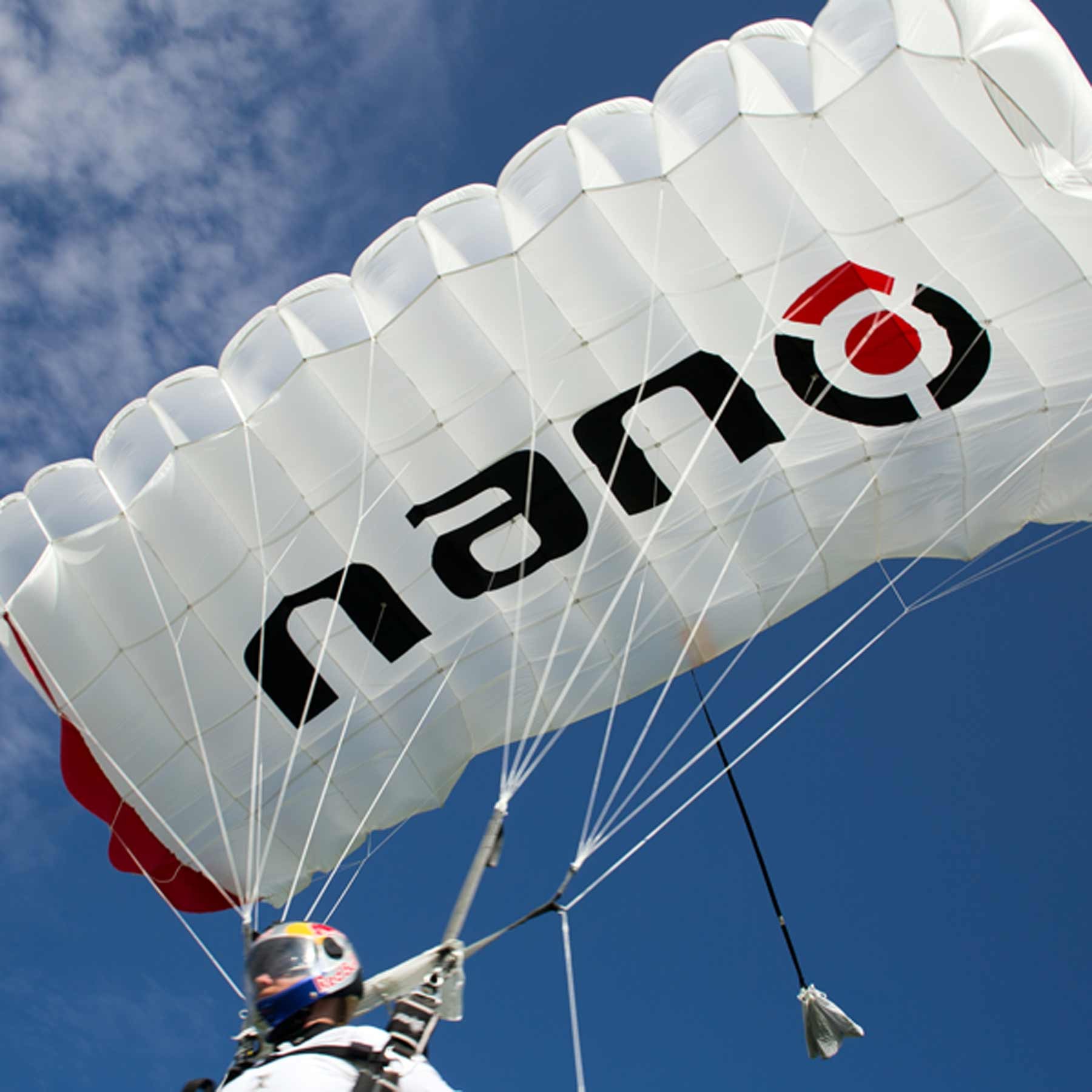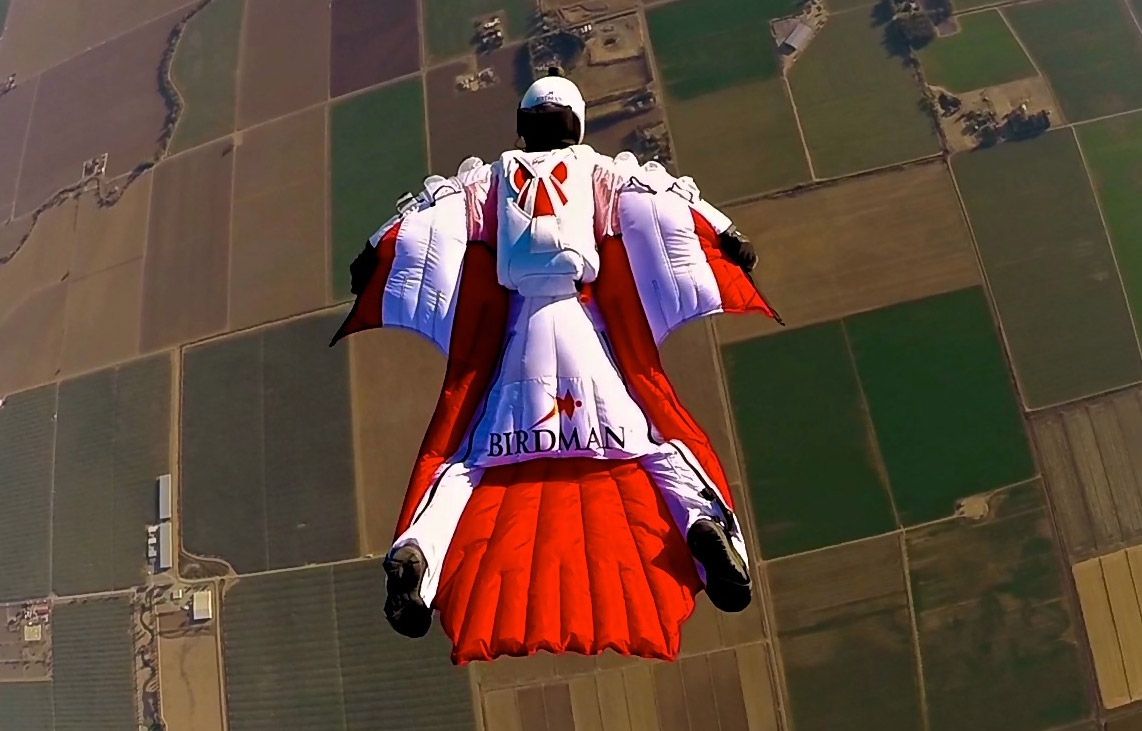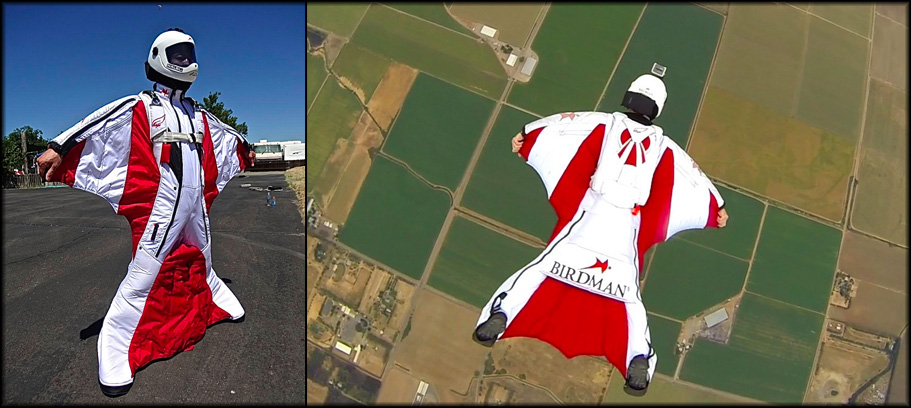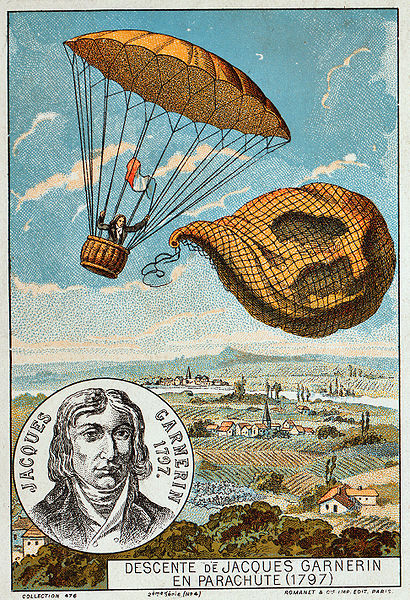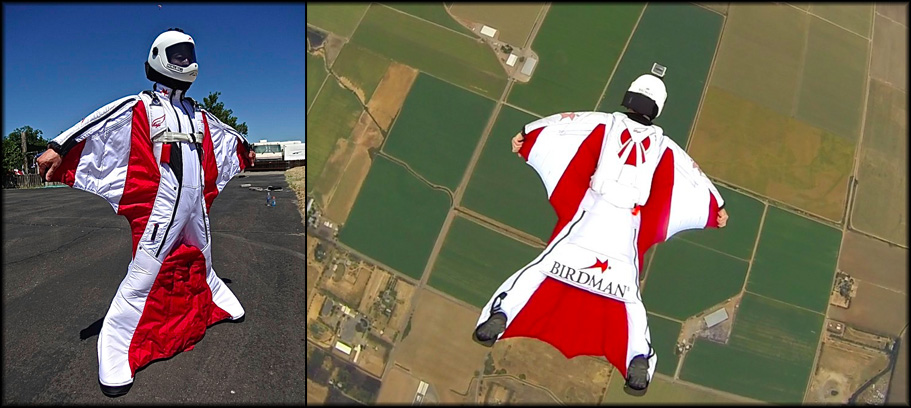-
Content
-14 -
Joined
-
Last visited
-
Days Won
1 -
Feedback
0%
Content Type
Profiles
Forums
Calendar
Dropzones
Gear
Articles
Fatalities
Stolen
Indoor
Help
Downloads
Gallery
Blogs
Store
Videos
Classifieds
Everything posted by admin
-
Not only is the HERO3+ Silver Edition 20% smaller and 15% lighter than previous models, it’s 2x more powerful—making it the most advanced Silver Edition camera yet. Wearable, gear-mountable and waterproof to 131’/40m, it captures professional-quality video at resolutions up to 1080p60 and 10MP photos at up to 10 frames per second. With 4x faster Wi-Fi, enhanced low-light performance, 30% longer battery life and compatibility with all GoPro mounts and accessories, the HERO3+ Silver Edition makes capturing and sharing your life easier than ever. Boasting 2x the performance of its predecessor, the HERO3+ Silver Edition captures high-quality 1080p60 and 720p120 video and offers dramatically improved low-light performance. Stunning video quality has made GoPro the world’s best-selling camera company, and the HERO3+ Silver Edition continues this tradition. High-resolution, high-frame rate 1080p60, 960p60 and 720p120 video modes result in professional quality footage and allow for liquid-smooth slow motion playback. The HERO3+ Silver Edition captures gorgeous 10MP stills at up to 10 frames per second—perfect for fast-action sequences. Time Lapse mode lets you capture a series of photos at 0.5, 1, 2, 5, 10, 30 or 60 second intervals. Thanks to a vastly upgraded sensor, the HERO3+ Silver Edition delivers remarkable low-light performance and overall enhanced image quality. Enjoy crisper, clearer footage with reduced distortion. The HERO3+ Silver Edition boasts increased image sharpness and a 3x reduction in imaging artifacts. Sound quality is as important as image quality. The HERO3+ Silver Edition features upgraded audio performance, capturing even the most subtle of sounds—whether you’re recording voices, music or the roar of your engine on a spirited drive. Advanced wind-noise reduction technology keeps the audio clearer during high-speed activities. Featuring a 30% increase in battery life, you can go longer and capture more with the HERO3+ Silver Edition. Speedier Wi-Fi delivers 4x faster video preview and faster photo and video sharing with the GoPro App than ever before. Also enjoy enhanced connectivity to the Wi-Fi Remote (sold separately), which enables control of up to 50 cameras from distances of up to 600’/180m.
-
The HERO3: White Edition is 20% smaller and 15% lighter, and captures professional-quality video up to 1080p30 and 5MP photos at up to 3 frames per second. Built-in Wi-Fi allows you to control the camera remotely using the Wi-Fi Remote (sold separately), and enables full camera control plus content preview, playback and sharing with the GoPro App. Wearable, gear-mountable, waterproof to 131'/40m and compatible with all GoPro mounts and accessories, the HERO3: White Edition makes it possible to capture and share your life like never before. The HERO3: White Edition captures high-quality 1080p30, 960p30 and 720p60 video and 5MP photos at up to 3 frames per second. Time Lapse mode lets you capture a series of photos at 0.5, 1, 2, 5, 10, 30 or 60 second intervals. Sound quality is as important as image quality. The HERO3: White Edition is precision-engineered to capture even the most subtle of sounds—whether you’re recording voices, music or the roar of your engine on a spirited drive. Advanced wind-noise reduction technology keeps the audio clearer during high-speed activities. Featuring built-in Wi-Fi, the HERO3: White Edition is compatible with the Wi-Fi Remote (sold separately) and GoPro App. Control up to 50 cameras from distances of up to 600’/180m with the Wi-Fi Remote. Or use the GoPro App to control your camera remotely with a smartphone or tablet—plus preview, play back and share your favorite shots via email, text, Facebook®, Instagram™ and more.
-
Without an atmosphere we would continue to accelerate during free fall to ever increasing velocities until we impacted mother earth. Without an atmosphere our parachute would of course be worthless. Hence a soft landing on the moon requires retro rockets to decelerate to a soft landing while parachutes have been used to help decelerate the Martian landers in the thin carbon dioxide atmosphere of mars. In the absence of atmospheric drag we would experience a linear increase in velocity with time as described by: Where ln is the natural logarithm base e and cosh is the hyperbolic cosine function. We can now evaluate eqns (10), (11) and (12) for various times over the free fall period to obtain the acceleration, downward velocity and the distance the skydiver falls. These results are tabulated in Table (1) and corresponding plots are illustrated in Figs (1) through (3). Eqn (11) was used to calculate the plot in Fig (1). We note that as we exit the aircraft at t = 0, our initial acceleration is 32 ft/sec^2, (gravity rules). As the opposing aerodynamic drag force increases with our increasing free fall velocity, our downward acceleration decreases. We see from Fig (1) that our acceleration diminishes to about half of it’s initial value after 5 sec of free fall and all perceptible downward acceleration has ceased after 15 or 20 sec. Our free fall velocity was calculated from eqn (10) and is plotted in Fig (2). It steadily increases over the first 5 seconds of free fall from zero to nearly 90 mph. During the next 5 to 10 seconds our acceleration diminishes significantly as we approach terminal. It is the post 10 sec period of the skydive when our sensation of falling is replaced by the feeling being suspended and cradled by the pressure of the wind. Eqn (12) was use to calculate and plot the free fall distance. It is apparent from Fig (3) that we fall only about 350 feet in the first 5 seconds and at least twice that far in the second 5 seconds. Beyond 10 seconds the plot is nearly linear as we approach a constant terminal velocity. Fig (3) confirms our often used rule of thumb “we free fall about 1000 feet in the first 10 sec and another 1000 feet for every 5 sec thereafter”. Comparing the distance at 25 sec with that at 20 sec in Table (1) we see a difference of about 860 ft, a bit less than the rule of thumb value of 1000 ft. The 1000 ft per 5 sec of free fall at terminal is only precise for a free fall rate of 1000 ft / 5 sec = 200 ft/sec or 136 mph rather than 120 mph used in this example. Hopefully this example and discussion may provide some insight to those who are mathematically inclined and curious about the “whys”.
-
Over the holidays, my girlfriend and I drove from Charlotte, North Carolina to Raleigh, North Carolina to visit her family. What we encountered on our road trip was something that every traveler has to contend with - dirty bathrooms. With full bladders, we chose an interstate exit which offered a choice of four different fuel stations. We picked the one that looked the most modern in hopes of discovering that rare, road-trip find: the gas station with a clean bathroom. Walking into the station, we noticed that the owner had a sign crudely taped to the door that said restrooms were not for public use. Only "paying" customers could have access to the bathrooms. Accepting this 'must-buy-something-in-the-store' condition, we walked in, used the filthy facilities (the women's room neither had toilet paper nor soap), purchased a Starbucks Frappuccino, a very burnt tasting coffee and vowed to never return again. I wish this gas station would hire me for a marketing consultation. I would transform this business to a level of success, once believed to be unimaginable. In fact, my client would change the way the competition does business just to remain competitive. My input would result in lines queuing off the exit ramp as if there was a gas shortage. How would I do this? I would satisfy the pain point of travelers by providing a clean bathroom. Not just a clean bathroom, but AMAZINGLY clean bathrooms that are designed for high volume and easy maintenance. I would advertise these amazingly clean bathrooms to the masses, exclaiming to every traveler on the interstate of how clean they are. So what does this have to do with the skydiving industry? EVERYTHING Few industries have as much bathroom traffic as the skydiving industry. Looking for your student on the 20 minute call? They're in the bathroom! I've often said that you can tell how a business feels about its customers by looking at the bathroom. This is a point that must not be ignored, but there is a bigger message here. This article is less about bathrooms and more about addressing the obvious points that DZO's miss because of subjectivity. The time investment that a DZO puts in during an average summer weekend day is usually 12-14 hours. It's easy to lose sight of the obvious and become blind to what your customers are actually experiencing. What are the pain points for your customers?Directions? Cleanliness of Bathrooms? Cleanliness of the Hangar? Cleanliness of the Packing Mat? Hospitality of the Manifest Staff? Dirty jumpsuits? What are the pain points of your staff?Maintaining equipment? Clean goggles for students? Frap hats in good condition? Laundered jumpsuits? 9 Steps to Exceed the Expectations of Customers 1. Identify. Identify every customer point of interaction with the business. 2. Evaluate. Answer the question, "Are we providing 5 star service at each point of interaction?" If you’re not, you need to be. 3. Gather Feedback. Poll your customers. If possible, e-mail your customer database requesting they take a brief survey about your company. Each question in the survey should request an evaluation at each point of interaction. 4. Listen. Listen to what your customers are saying. Don't blow the feedback off as trivial. This feedback is critical to a business' survival. Make appropriate changes based on the feedback. 5. Set Goals. In order to exceed the expectations of your customers, a measurable goal must be set for everyone in the company to work towards and achieve. 6. Measure. Create a statistic that charts progress based on the new goals. 7. Recognize - Recognize pain points employees endure when trying to deliver excellent service. Make it as easy as possible for your staff to amaze the customer. Also, identify team members who are unable to deliver the level of service management requires. Try to coach employees wherever possible, but be ready to remove team members who do not buy-in. 8. Establish Culture - Delivering amazing service does not happen by simply announcing "Let's give better service!" Employees need to be happy in order to deliver great service consistently. Establish core values with employee input and hold the company to that standard from the CEO down. 9. Communicate. Communicate and over-communicate. Give as much feedback to employees as possible. People wish to feel like they are part of something bigger than themselves and will take more pride in their work if they know their contribution makes a difference. Praise publicly and always punish privately. Powerful marketing focuses on how a customer feels about a company. Exceed the expectations of your customers to gain the advantage in your marketplace. The details matter. Above, the before and after pics of the bathroom facility at Triangle Skydiving Center. When customers are paying a premium price to use your services, a premium experience should be given. The industry must remember that we are operating million dollar + operations. Make it a million dollar experience from start to finish at every point of contact.
- 13 comments
- 16
-
- industry
- general safety
-
See more
Tagged with:
-
The Women’s Vertical World Record [WVWR] attempts brought 95 women from 18 different nations to Skydive Arizona November 26-December 1st. I can’t help but reminisce back ten years ago when Amy Chmelecki and I organized our first WVWR and only had 20+ women from 5 nations. The rise of female participation from 2003 to now has been remarkable However, what makes this event so remarkable, are the women who participate in the journey of making history. We organizers, Amy Chmelecki, Sara Curtis, Anna Moxnes and Domi Kiger and myself, set the stage by hosting camps around the world to help prepare women for this venture. And that’s what it’s about, the journey, not the destination. We were set out to break our own world record of 41. There were many women whose journey’s I was so honored to be a part of, that inspired me in my own journey that I asked three of them to share a bit of their story. Shannon Fitzgerald D’Alessio made her first jump in September 2002 at Skydive Crosskeys. She attended her first WVWR camp I hosted at Skydive Elsinore in October 2012 and said she had the most fun there than in the past ten years of skydiving. “I left the camp feeling energized to improve so I could be on the record the following year.” After she made the resolution, she found out she was pregnant four days later. At age 17, Cathy O’Sullivan did her first jump out of a helicopter but it wasn’t until college days that she did her AFF Course. Cathy jumped off and on but in 2010 she moved Skydive Chicago and decided to seriously pursue learning to freefly. “The WVWR was the perfect goal to set in order to improve my skills and be a part of something amazing.” On June 30th 2013, just a few months before the record attempts, Cathy’s canopy collapsed about 30 feet from the ground from turbulence that left her hospitalized for a week and a broken pelvis/sacrum in four areas. Valentina Solis pulled off the most epic covert move from her parents at the age of 12 – she did her first tandem, without her parents knowing! That moment became much more for than just sneaking away, she knew that she was destined to be a skydiver and in 2007 started her AFF in Mexico. In 2012, Valentina finished her first marathon. Along that journey she met Cathy O’Sullivan and she sent Valentina a link of all the WVWR camp info. She knew then that was to be her goal for 2013. But she was just getting proficient flying on her head. When Shannon learned she was pregnant, she stopped jumping and flying in the tunnel. She did her first jump back after having a healthy baby boy ten months later, when he was 7 weeks old. “I wasn’t sure if I would be ready to participate. I went to the last scheduled WVWR camp in Eloy last Halloween and my flying was not awesome. I was pretty disappointed,” Shannon recalls. She not only had to deal with coping with her uncurrency, she also had to tend to sleepless nights and an enormous amount of energy to nurse her newborn. Cathy helped me organizing logistics during the Summerfest camp at Skydive Chicago, and I would glance at her as I reviewed our jumps. Her eyes were wide open with complete focus, sitting with her legs crossed, leaning forward with her fist under her chin. She had the look of determination. “The goal of the record stayed in the back of my mind. I tried to stay involved and sat in on the WVWR during Summerfest on crutches, and watched the debriefs in an attempt to learn as much as possible from the ground.” Valentina came to my camp in Sebastian for the Invasion Boogie in 2012/2013. I could tell she was a new freeflier, but that’s exactly why we hold camps. “I attended the first camp in Eloy and I realized how hard this actually was, and that is what made me stick to it and train hard,” Valentina said. “My husband Daless supported and encouraged me in every way,” begins Shannon. “He said to me, ‘How cool will it be to tell JD [her son] you’re a world record holder? If you don’t try, you’ll always wonder if you could have made it.’” Shannon’s husband took care of their son while she did more skydive training and the Nor Cal crew worked with her in the tunnel. Cathy’s doctor cleared her to “ease” back into normal activities less than 2 months to the attempts. She used a hanging harness to determine if her pelvis could handle opening shock, did stability drills in the tunnel and a friend organized a big way skills camp so she could get current flying with others. She said, “With the memory of my accident still fresh in my head, there were a lot of issues with fear that I had to learn how to manage as I was trying to ‘ease’ back in the sport. By far, the biggest challenge of getting back into the sport that fast was overcoming the fear of getting hurt again.” Valentina’s journey lead her through intense moments of frustration. She was training in the tunnel and attending big way camps. However digesting huge amounts of information on how to exit and approach formations and applying them were on two different tracks. “For me, the biggest challenge was building my confidence, controlling my emotions and having positive thoughts, despite the frustrations between the good and bad jumps." A world record requires so much focused energy – mentally and physically. It requires you to be your best for the team to succeed. There’s so much pressure and expectation to perform and it is the job of the organizers to select the team to conquer that goal. We organizers said at the initial debrief, “there’s no crying in skydiving. Only when someone dies or you’re at the Grand Canyon.” When the team was selected, Shannon was part of the first attempts, however Cathy and Valentina were not. Shannon explains, “My goal was to have fun and be safe. If I made the record, awesome. If not, I was spending 5 days doing awesome skydives with amazing women. So when my name was called for the first attempt, I was utterly shocked. Followed immediately by nerves and adrenaline.” “Having to tend to a sleepless child and breastfeed was a lot of hard work and controlled chaos. I had to do things that I never imagined would be a part of my skydiving routine. Every morning I would pump in the car while my husband drove me to the dz. I hired a packer, so in between loads I could jet off to the bathroom to pump again. I’d get done just in time for the debrief and dirt dive.” Cathy’s perspective shadowed Shannon’s. “By the time I got to Arizona, I had set my expectations realistically, expecting to be on the B team. I felt the B team was going to be an amazing outcome by itself, and would be valuable training for another record someday.” Valentina explained, “The beginning was very hard for me, as I wasn’t part of the attempts, so I had to keep focused and positive to do my best on the B team. On every jump I thought to myself, ‘this jump is my record and I will make this happen.’” After the first day’s attempts, Shannon was rotated out of the formation. “When Melissa walked towards me, I knew I was cut. I was disappointed, but not surprised. Jumping with the B team was awesome – a relief! I told myself I had nothing to lose, so my goal was to be consistent and solid.” The third day was challenging as the ladies were starting to feel the physical effects of going to 18,000’ for the last few days and facing the mental challenges of repeating the same jump over and over. Since the third day was the last day, we changed the size of the formation from 69 to 65, then 63. We organizers tirelessly reviewing the B teams jumps. “Melissa came up to me and asked if I was ready. I asked, ‘ready for what?’” Cathy recalled. “My initial response was disbelief, then I realized what was happening, then I said, YES!” “Working on being solid on the B team paid off!” Shannon explained. “I got put back onto the attempts!” Shannon kept a mature perspective throughout the changes. She even said to me that she had to concentrate on staying calm in the plane and in the air to control her nerves and focused on small things to improve. “When the final day of the attempts came I was super nervous and stressed, but deep inside I knew I was ready,” Valentina remembers. “One by one I felt I did a very good job on each jump. Then Anna came up to me and said, ‘get ready, you’re in the record.” Day 3, Attempt 12. The core 40 built quickly. The levels were looking good, the energy was there. A small part of the formation exploded and one person flew out, yet the rest of the formation was unaffected and finished building. The troubled section rebuilt and the last dock happened the last second before break-off. We knew we built a new world record! “It feels freaking amazing! I’m still in awe of all the hard core women who made it happen. In such a male dominated sport, I’m proud to be part of a group that reached this level of flying!” explained Shannon. “It’s still a little surreal. When the judges announced that we got the record, the floodgates opened and I literally had tears of joy streaming down my face (which was cool because the record was over and we couldn’t get cut for crying)!” she joked. “I looked around the room at all of the amazing people and was so proud of what we accomplished, and so grateful to be a part of it.” “Words are not enough to express how amazing this whole experience has been! I’m thirsty for more!” Valentina said. The mental strength played a big role for me and this quote became my mantra, “A bird sitting on a tree is never afraid of the branch breaking, because her trust is not on the branch, but on it’s wings. Always believe in yourself.” On every jump, cameraflyer Jason Peters had with him the ashes of our fallen comrade, Stephanie Eggum. The plan was to release her ashes on the world record. Although the judges weren’t in the air to confirm that Attempt #12 was official, through his lens Jason knew without a doubt that we had it and let Stephanie free. So to us organizers, we really built a 64-way. And this is why I keep doing this. The amazing experience, the amazing women, and the amazing ride. This is my 11th World Record, and it just keeps getting better.
-
With under two weeks until Christmas of 2013, I hope you've already done your Christmas shopping. But in case you haven't, we've put together a list of potential gifts, ranging from high end gear (perhaps for those looking to leave themselves, or their loved one something skydiving related under the tree), to smaller stocking stuffers that could be a good gift for friends and fellow jumpers. Cookie Fuel HelmetThis open face helmet can be ordered as the helmet only for use as a basic, comfortable open-face helmet. Or it can be transformed into a full-on camera helmet with a top-mount, side-mount, cutaway chinstrap and outside access audible mount. Just as Cookie Composites revolutionized the full-face camera helmet with the G3, the Fuel looks to do the same for the open-face and POV camera helmet markets. The Cookie Fuel shell is made of a High Impact ABS / Polycarbonate Blend. It comes standard with pressed foam chin strap (non-cutaway) and blank side and top plates. The blank side plates will hold any audible altimeter, but the audible won’t be visible from the outside of the helmet unless the optional audible mount side plate is ordered. For more information and pricing visit: From Skydive Store From Chuting Star GoPro Hero 3 BlackCapture and share your life’s most meaningful experiences with the HERO3+ Black Edition. 20% smaller and lighter than its best-selling predecessor, it delivers improved image quality and powerful new features geared for versatility and convenience. SuperView™ is a new video mode that captures the world’s most immersive wide angle perspective, while Auto Low Light mode intelligently adjusts frame rate for stunning low‐light performance. Combined with 30% longer battery life, faster built-in Wi-Fi and a sharper lens, the HERO3+ Black Edition is the most advanced GoPro yet. For more information and pricing visit: From Skydive Store From Chuting Star GoPro LCD Touch BacpacRelive Reality Instantly with the GoPro LCD Touch BacPac. The LCD Touch BacPac is a removable LCD touch screen for GoPro cameras*. As a removable accessory, the LCD BacPac keeps your camera as small and light as possible, yet provides the convenience of an LCD screen when attached. Seamlessly attaches to the back of GoPro cameras LCD touch screen allows for easy visual control of camera (frame your perfect shot) and settings Preview + playback photos and videos including instant slow motion playback Integrated speaker with volume control 3.5 mm headphone jackFor more information and pricing visit: From Skydive Store From Chuting Star Gear BagsLooking to stash all your gear into a single bag, making carrying a breeze. These gear bags have plenty of room, for your rig, jumpsuit, camera and your accessories. For more information and pricing visit: From Skydive Store From Chuting Star Pro TrackThe ProTrack audible altimeter/electronic logbook is the standard for audible altimeters. The ProTrack continuously stores detailed information about the last 200 jumps and accumulates the total number of jumps and freefall time up to 10,000 jumps. The ProTrack has 3 selectable freefall warning altitudes. The Most Popular Skydiving Computer Loaded with advanced features, PROTRACK™ gives skydivers a full plate of information about their skydives INSTANTLY on the large LCD viewscreen. Whether you fly on your head, turn points like a banshee, dock first on a big-way, surf the clouds or are just learning to skydive, PROTRACK™ is the perfect audible altimeter solution for you. L&B; has also added special data collection parameters and preset dive types for both WINGSUIT FLIGHT and B.A.S.E. JUMPING making the PROTRACK™ even more versatile for every type of jump and every kind of jumper. PROTRACK™ can be easily set for 1, 2 or 3 loud and distinct freefall warning altitudes and will provide you with the ability to log up to 9,999 jumps! See your exit altitude, freefall time, average freefall speeds, maximum speed reached and deployment altitude of your skydive as soon as you land. No other audible altimeter available gives you the versatility, accuracy and reliability like PROTRACK™! PROTRACK™ is the most advanced, user friendly, and accessible audible altimeter electronic logbook/freefall computer available to skydivers. PROTRACK™is everything you would ever want in an audible altimeter. New technology advances in speed calculation have been developed by L&B; so that skydivers can now record and compare their freefall speeds accurately. For more information and pricing visit: From Skydive Store From Chuting Star Stocking Stuffers Flexvision GogglesFlexvision Goggles: the goggles with a friction lock adjustment and without an outer rim to fall off! Flexvision are made from a soft, flexible, long-lasting plastic that is scratch resistant. Each pair is individually sanded on the inside for a smooth finish, and offer a wide field of vision. A thick bungee strap pulled through a small hole in the plastic allows the user to adjust the tension without need to make a knot, just pull to the desired tension and release. The friction Lock is a unique feature, especially for students and tandems where there is a need to change settings often. The Flexvision Goggles come flat, but then conform and mold to your face as you put them on and tighten up the bungee. Keep an extra set in your jumpsuit! These are one of the longest-lasting goggles manufactured specifically for skydiving and give you an unobstructed field of vision. For more information and pricing visit: From Skydive Store From Chuting Star Neumann Winter Skydiving GlovesThese gloves are the standard for winter hand protection for skydivers from the company that knows gloves: Neumann. These gloves have a thermal-lined back for extra warmth in the winter. Neumann Tackified Skydiving Gloves are: Designed To Fit Like A Second Layer Of Skin Meets NFL/NCAA Specifications Ensure Finger And Hand Sensitivity Tackified Leather Palms Machine Wash and Air DryFor more information and pricing visit: From Skydive Store From Chuting Star Skydiving Santa Christmas CardsWhat better Christmas card to send to friends from the dropzone than a skydiving Santa Christmas card. From Chuting Star Sugar Alpha"Skydiving and drug smuggling pioneer Roger Nelson lives life out of the box. Fueled by a love for adrenaline and adventure, Roger goes after everything he wants with gusto. But now Roger is ready to retire from smuggling. With a parachute center to run and a family to raise, Roger knows it is time to stop the cat-and-mouse games he has been playing with the authorities for years. He and his longtime partner, Hanoi, plan one final run to Belize, where they intend to fill their Douglas DC-3 with enough cannabis to set them up for life. But then Hanoi dies in a plane crash in an attempt to make some "legitimate bucks" flying fish in Alaska while they wait for the growing season to end. Left without a partner or plane, Roger remains determined to return to his family for good. To do so, he decides to stay true to himself and follow through with his retirement run. Roger must rely on a colorful cast of characters and the most unlikely airplane for a gig ever-Sugar Alpha, the legendary DC-3 with the secret fuel tanks and not-so-secret paint job-to help him complete the most daring run in the history of smuggling." The book has received excellent reviews and would make a great gift to anyone who enjoys a good book. Log Book CoverAn inexpensive and useful gift for your friends who jump. For more information and pricing visit: From Skydive Store From Chuting Star Beer MugFor more information and pricing visit: From Skydive Store The Skydiving HandbookParachuting, The Skydiver's Handbook by Dan Poynter and Mike Turoff is the one and only how-to, where-to, basic-to-advanced skydiving manual. This up-to-date book covers all training methods in great detail: static line, accelerated freefall, Instructor assisted deployment and Tandem. It traces the history of the parachute up to modern skydiving, year by year. The chapter on emergency situations is absolutely fascinating. Full of statistics, it reveals the best solution to every possible emergency situation. The book goes on to coach you in your freefall progression, from the basics through advanced relative work and free style, and in flying your canopy, from the basics to advanced canopy relative work. The equipment chapter is lengthy because this is where Dan Poynter has always been strongest. He tells you all about your gear, what to look for, what repairs you can make and when to take it to a rigger. Another chapter covers special jumps: at night, into the water, BASE, para-ski, high altitude, Smoke jumping, with cameras and much more. The Appendix directs you to the action by listing clubs, drop zones, equipment companies, books, magazines and videos. Never before has so much skydiving information been available in one place-and it can be yours. The Skydiver's Handbook. Completely revised, ninth edition, softcover, 5.5 x 8.5, 408 pages, 260 illustrations, four-color cover. Over 82,000 in print. For more information and pricing visit: From Skydive Store From Chuting Star
-
When I graduated from college I headed west and became a wildland firefighter. Over the course of a decade I fought fire from Arizona to Alaska. During that time I worked fire with a variety of agencies and units ranging from prison crews, BIA crews, and hotshot crews. From time to time I also crossed paths with smokejumpers, and always felt obligated to kick it up a notch when in their presence. That was for good reason, for among firefighters smokejumpers are at the top of the food chain. Smokejumpers are often dropped into fires that are too remote for ground based firefighting resources to reach. They are deployed to fires shortly after they ignite while they are relatively small with the intention of putting them out before they grow into large conflagrations. They are left to their own resources to extinguish the fire, hopefully within a day or two of being dropped on the fire. If the smokejumpers are unable to quickly extinguish a fire, other resources are typically brought in on the fire within three days. Once other firefighting crews are in place, the smokejumpers return to their base of operations and await another call to deploy quickly on a fire. However, this is not always the case, as smokejumpers have been known to spend over a month on some fires. TrainingSmokejumpers typically spend several seasons as a hotshot, an elite ground base fire crew, before applying to be a smokejumper. Experience as a firefighter is critical to making it as a smokejumper whereas previous experience parachuting out of aircraft is not a requirement. In a given year, only a small number of those that apply make it as a smokejumper. Smokejumpers undergo rigorous training where the washout rate is high, either from injuries or from being unable to keep up with the physical training. Training consists of a large amount of physical workouts which include calisthenics and running. Classroom time is devoted to a range of topics including CPR/First Aid, parachute manipulation, pre-field exercise briefings and post-field exercise debriefings, and tree climbing. Field exercises are designed to make the candidate competent enough to successfully handle the diverse number of situations a smokejumper will encounter during smokejumper operations. They include cross cut and chainsaw use, map and compass orientation and tree climbing. Parachute training initially includes mock ups of how to successfully perform airplane exits and landings. Before a rookie smokejumper can make their first practice jump, they must successfully pass through the field exercise training. Rookies must then make a total of 15 practice jumps into a variety of jump spots with each successive jump increasing in difficulty. At any point in the training a rookie may be let go if it is determined that they may be unable to meet the challenges of the job. They are constantly being evaluated on their attitude, fortitude, and leadership qualities. Candidates must be self-reliant yet also work well in a team environment. They must also exhibit flexibility and adaptability as they must be quick to adapt to the ever changing dynamics of a fire. Dropping InThe size of the fire and the availability of manpower determine how many smokejumpers are deployed on a fire. A typical jump consists of two to eight jumpers and is usually made between 1,500 and 3,000 feet above ground level. Smokejumpers are used strictly for initial attack on a fire when other resources are not available. The first jumper on the ground takes the role of Incident Commander. This means a rookie jumper could be in charge of a much more veteran crew. Parachuting into wilderness terrain is a stressful endeavor unto itself. Landing in an un-scouted forest meadow on the side of a mountain after navigating erratic wind currents is considered a great option. That is the easy part. The challenge is to safely and quickly get the fire under control or out and find your way to a pickup location so that you will be available to do it over again. This translates into long hours working on a fire, often through the night when the humidity rises and the fire tends to slow down. Once the fire is put out or other resources arrive to take over, smokejumpers are released from a fire so they may be available as a resource for initial attack on other fires. For a smokejumper, a ride out of a fire by helicopter or on a four wheel drive vehicle is a luxury. Otherwise they must hoof it out on foot. When packing out on foot, they typically carry 100 lbs. of gear or more across rough, trail-less terrain. GearTwo types of chutes are used depending on which agency the smokejumper works for. The Bureau of Land Management uses the square or “ram-air” parachute while the forest service employs the round parachute. Over top of their fireproof clothing, smokejumpers wear a padded jump jacket and pants made of Kevlar. A motorcycle type helmet is worn with a heavy wire-mesh face mask. Each smokejumper carries a small gear bag containing their water, gloves, fire shelter, hard hat, and other personal gear necessary to keep them active on a fire line for an entire shift. Heavier equipment, such as chain saws, hand tools, enough food and water to last several days, and other gear is dropped separately and, like the smokejumpers, as close to the fire as possible without running the risk of having the fire burn it. Becoming hung up in trees is an occupational hazard and one smokejumpers train extensively for. In the event they become snagged in a tree each smokejumper carries a “let down” rope in their leg pocket for rappelling down from a tree. Alan Carr is an avid aviation buff that enjoys writing on all aspects of the aviation industry. He currently works with globalair.com to provide resources on aircraft related information.
-
"No matter how bad you think it is, never give up, because guess what, it may not be as bad as you thought it was." Jeb Corliss shared this lesson he learned with Conan following his—seemingly un-survivable—crash on Table Mountain. It wasn’t his first crash, and it may not be his last, but he’s been quite open about what brought him to skydiving in the first place. He uses his jumps to chase his personal demons away, pushing himself farther, faster, and closer to the edge, and as long as the sport doesn’t kill him, it appears to be working. Ultra-Runners have more in common with Jeb that you may think. Many of them are also chasing demons, using the tremendous personal challenge of running 50 or 100 miles, or even more, to explore their boundaries—to get closer to the edge—because coming back from the edge makes life’s hardships seem trivial… for a while, then it is time for a new challenge. Eric Friedman, a skydiver, an ultra-runner, and maybe just a little challenge starved, enjoyed running with a friend around their drop zone before a day of jumping. It was a regular habit and neither thought much more about it until, one day, while jogging on the beach in Hollywood, his combination of habits, and hunger for a new challenge gave Eric a crazy idea, “What if we combine skydiving with ultra-running? That would be awesome!” Like taking chocolate and peanut butter, smashing them into a ball, and launching that ball into space… and then making the ball run 50 miles, the first Skydive Ultra was born. Loosely organized, and with limited promotion, the first event attracted the nuttiest of the demon chasers who, based on the pictures, seem thrilled to be falling two miles before running 50. That was last year, and it was a small but memorable success. This year is going to be bigger, better, and even nuttier. 50 miles? Nah, make it an even 100. This will be for top honors but everybody likes to skydive and run right? So, this year, in addition to the 100 miler, there will be a 50 mile, a 50 kilometer, and some ‘short’ races like, you know, a marathon. There will even be a half-marathon and a 10k for you regular skydivers that just want in on the action. Skydive Ultra 2014 is February 1-2 (Yep, two days, have you ever run a 100 miles?) The drop zone is located in Clewiston, Florida but participants are coming from all over the world. If you aren’t already a skydiver maybe you thought that was your excuse, nope, first time jumpers are the biggest part of the fun! Tandem jumps will be offered but licensed jumpers are, of course, required to encouraged to participate. Bring your not-so-nutty friends and family, there will be plenty of fun to be had. There will be a tire-pull competition as well as horseshoes, Frisbee, volleyball, and more. Visit Skydive Ultra on Facebook, Google+, and YouTube to keep up with the event news and stop by the website for all the details. Maybe we aren’t all chasing demons, maybe we’re chasing dreams, or maybe we’re just chasing the guy in front of us, but no matter what you’re chasing, “…never give up…”
-
Shin Ito flying his Katana at about 12000 ft. The jump altitude was just 8000 ft. above ground level measured from the drop zone and because of the rising terrain at exit point our altitude was just over 5000 ft. above ground level. Hiking tracks visible on the side of the 3776 meter high volcano. Last Friday Jari Kuosma and Shin Ito performed wingsuit flights over Mount Fuji, Japan. Mt. Fuji is Japan's largest mountain, at 3776 meters in elevation. The flight was part of an upcoming Japanese documentary feature named "Jounetsutairiku" which is being broadcast by MBS. Both Jari and Shin, exited from helicopter at 12 500 feet. Shin Ito is a world record holder in wingsuit flying and Jari is both a professional wingsuit pilot as well as the owner of Birdman. The documentary will be aired on the 1st December 2013. "Part of the preparation was to check our jump craft, Eurocopter AS 350, that turned out to be a perfect lift, 10 minutes to altitude and very convenient stepping skis." "Our wingsuits taking a rest under the Japanese sun. BIRDMAN Katana was our primary equipment for the flights. The brand new wingsuit design is still a prototype and it is made for to reach very high speeds to cover the maximum distance." "We spent one day getting used to Japanese air near Narita airport. Airspace is very limited and we can only get 8000 ft., which is the max we will get at Fuji, 8000 ft. AGL." Mt. Fuji seen from freefall before opening the canopy. The weather conditions can change quickly at the mountain and winds regularly exceeds over 100 km/h on the top, like the jump day afternoon. Jari who filmed the aerial part of the documentary carried four GoPro 3’s and a Garmin Virb on his Z1. Shin carried two GoPro 3’s and a Garmin Virb on his belly. Mt. Fuji in an active volcano that erects to 3776 meters. Wind direction is west most of the time and the wind speeds exceed 10 m/s over 300 days a year. Team Fuji Birdman was prepared and had permits to wait for three weeks for the right weather conditions. After a three day weather hold three jumps were made November 22nd 2013. Jari Kuosma carrying five cameras to capture all the action from different angles. Shin Ito flying towards the DZ 3 km away, an empty parking lot that also served as a heli-pad. Last poses for the film crew of Shin & Jari after a very great day. Fuji-san on the back ground.
-
Earlier this year we brought you the article Inside Squirrel Wingsuits, where we talked with Squirrel founder Matt Gerdes about the then new wingsuit manufacturing company. We discussed what set Squirrel apart from other wingsuits and where the company was aiming to go to from there. You can now find Squirrel wingsuits on a number of extremely skilled and well known flyers, and Squirrel is seemingly establishing itself as a trustworthy and reliable wingsuit company. The latest addition to the Squirrel inventory is the Swift. The Swift is a suit that is marketed as a beginner suit for both BASE jumpers and skydivers. While it is said to be easy to fly, it is stressed that the Swift is by no means limited to beginner flying and still a competent suit for intermediate and even experienced wingsuit pilots. When developing the Swift, Squirrel wanted to bring to the table a wingsuit that would be forgiving to fly, while at the same time providing the performance needed in a BASE environment and when flocking. There is also a focus on agility and the suit is said to be great for acro, backflying and other quick maneuverability. The DesignInlets The Swift's inlets are catered to efficiency, with the surface area being larger than on some other beginner wingsuits. Both arm and leg wing pressure is able to be adjusted using the internal zips, doing so will ensure that you are able to manage your ride to be softer, if you are a newer pilot. Leading Edge Leading edge construction is a pivotal and complicated matter in wingsuit design. While rigid structures on the arm would allow for enhanced performance, it would pose a safety risk, but at the same time an overly flexible design would cause a loss of performance. One of the key elements to developing a good wingsuit is to find the perfect balance between a rigid, high performance design and the safety that comes with the more flexible design. Squirrel suits say that they've found the right ingredients to allow the high performance, along with safety; thanks to their three-layer leading edge design. While the exterior layer is finished in Glideskin, a flexible, durable and smooth material, the middle layer is made from a static, non-flexible air-mesh material which is sized wider than the Glideskin. This stronger, more fixed middle layer ensures that the profile does not become deformed. Finally on the interior is a Lycra finish which provides a smooth surface. Only the first few centimeters of the wrist will allow for full flex, as to allow for easy BOC and brake toggle access. Planform Squirrel have gone with a stance and sweep that is extremely similar to their more advanced wingsuits. This will allow those who begin flying on the Swift to easy adapt and progress to some of the more advanced Squirrel suits. Should you begin jumping with a Swift and then later move on to the Colugo, you'll find the transition easier due to a familiarity. Likewise if you had to move from the Colugo to the Aura. Profile The Swift has taken its profile from the advanced Squirrel suit, the Aura; with adaptions made to the Swift's lower surface area and shorter chord. Squirrel say that the thickness of the Swift is similar to that of the Colugo, and was chosen because of the focus on stable trim flight. Features There is a focus that all performance enhancing features in a wingsuit should be standard. The aim from the company is to bring you excellent performance and features included in the price of the suit. All Squirrel suits include: Foam padded foot cavities, internal pressure-zips, nut-sack storage compartment, chest pocket / belly-cam access, mylar reinforced leading edge and rubber BASE soles. Access "Keep it Simple and Safe" has been the mantra for Squirrel and with easy BOC and brake toggle access being a focus in reliable deployments, the suit has been designed to allow for just that. Cutaways are totally unnecessary, says Squirrel, pointing out the extremely easy BOC access and ease of access for the brake toggles, in any situation. The Swift has been designed to bring the flyer the excellent performance while never compromising on safety. Features Force Feed - A 3D reinforced inlet with maximum intake to drag ratio. Developed as a primary safety feature. Innie-Outie (BASE Mode / Skydive Mode) - This feature allows you to easily change between BASE or skydiving mode. In BASE mode the harness will be located on the inside of the chest compartment, for reduced drag and optimum glide; this is enhanced by the zips being completely closed. In skydiving mode the handles are completely exposed at the chest, allowing for easy access and an increase in safety. RAD (Rapid Arm Deployment) - A simple arced cut at the wrist allows for increased ease in the reaching of the pilot chute and toggles. A small, yet highly effective feature. Get Stiffie - A Mylar-reinforced bottom surface on the leading edge ensures that the profile structure is maintained, as well as providing efficient feeding to the inlets. Get Stretchy - In BASE mode, the flexibility of the panels near the shoulder relieve stress on the suit during openings. Bar-tacks in areas also help prevent seam failure. Light Ribs - Porcher Sport Skytex ensures that the suit is light and durable, while at the same time being more stable than mesh. This helps in reducing weight and pack volume. Glideskin - This flexible and durable material is used on all Squirrel suits and is used on the leading edge, where it is able to provide a stable profile while at the same time allowing for flexibility at the wrist area. Airtight Construction - All Squirrel suits are tested thoroughly for airtight symmetry in order to ensure the highest build quality possible. Super Sexy Zippers - While safety and performance are at the top of the list, the Swift is also a good looking suit. The suit uses custom ordered YKK #10 Coil zips. You will have the ability to choose between five colors of zips when ordering your suit.
-
The Aura offers the best balance of high performance glide and agility that we have ever experienced. Our mission for the Aura was to create a suit that will satisfy the glide performance needs of the most demanding wingsuit BASE pilots in the world - jumpers who are pushing the limits of short starts and long glides at new cliffs all over the world, from the French Alps to the American Southwest. After a lengthy development process and extensive testing by Squirrel and our Team Pilots, we are happy to say that the result is even better than we'd hoped; not only do we have a suit which is undeniably at the top of its class in terms of glide, but it has also retained an incredible level of agility and speed range. The Aura is a highly versatile, high performance wingsuit, with the ability to dive down to steep lines or reach the most distant landing areas. We are confident that it will be loved by expert BASE jumpers and skydivers around the world, and we're very excited to hear what you think of it.
-
The Colugo is our big mountain terrain flying suit for pilots of intermediate to expert ability. This is our most versatile wingsuit, and what we recommend to experienced pilots who are looking for a next generation all-around BASE wingsuit. The Colugo provides solid glide performance, a fast start, high agility for rapid banked turns, and a clean and accessible BOC pull. It is a myth that one suit can be good at every aspect of flying, but the Colugo offers the best balance that we have ever experienced. We designed this suit specifically for pilots who want to carve big mountain proximity lines. The Colugo remains stable and pressurized at a very wide range of angles of attack, and delivers a solid and pressurized precise feel through every section of your flight, from steep dives to long glides. The most common question that we heard this year was, "What other suit is it like?" The answer is that the Colugo was developed specifically for maximum all-around performance in wingsuit BASE. This is our vision of an all-around suit that is ideal for a huge range of BASE jumps and terrain flights, for pilots who want a fast start, high maneuverability, and good glide. It is accessible and easy to use for its size. We've taken the best aspects of the other wingsuits that we have flown in the past, and combined them into the ultimate suit for next-generation BASE jumpers. Simply put, this suit is capable of the shortest starts and the longest glides out there. If you want to ace the short start and fly the complex lines of The Brevent in Chamonix, or fly from the High-Nose to Air Glaciers in Lauterbrunnen, then the Colugo will get you there, and beyond.
-
The Swift is the product of a long and focused development process, and is perhaps the most versatile wingsuit in our range. Although its primary purpose is to be a beginner suit for talented new wingsuit flyers in the skydive and BASE environment, its capabilities are not limited to beginner flying. Our mission for the Swift was to create a suit that was forgiving enough to be flown in an arched "box-man" position, but with enough performance range to jump a wide variety of objects in the wingsuit BASE environment, and to flock comfortably in the skydive environment. This is a suit that is simple enough to put your first jumps on, and yet you will never outgrow it - even when you move up to a larger, high-performance suit, you will still want to keep your Swift around for acro, backflying, or just some high-speed cloud-carving with your friends. The Swift is designed for talented beginners and experienced pilots of all abilities. Back-fly inlets are offered as an option, making the Swift a fun and agile suit for freestyle flying and steeper, more advanced, formations.
-
iFLY has continued its global expansion of vertical wind tunnel centers with the opening of iFly Dallas this week. The company, who now operate 27 facilities around the world, cut the ribbon on the new North Texas on Monday, 18th November 2013. The center is located at the Stonebrier Center Mall in Frisco. The company has claimed that the center boasts the world's most advanced wind tunnel with wind speeds of up to 175mph. The tunnel measurements are 14’ in diameter and 48’ in height. It will cater to persons aged 3 to 103. Whether or not we will see the iFly Dallas center hosting any competition in the near future is left to be seen, and it does seem that given the location and the focus of the press release, that the Dallas center may be catered more towards non-skydivers who are looking for fun, as opposed to other tunnels that tend to focus more on competitive training. Never the less, the center will still be open to competitive skydivers and will also no doubt expand the already explosive growth of indoor flying. Over the past decade tunnel flying has become an imperative part of freefly training and is now an almost mandatory aspect of competitive training. The expansion and increase in accessibility has also seen an entire new wave of tunnel flyers emerge, as children under the ages of 10 have become proficient flyers. The impact that this may have on the growth of the skydiving industry will be seen in a few years. With these children already skilled in freeflying, it will no doubt give them a large advantage should they take up skydiving and begin doing it competitively - particularly within the freeflying discipline. iFly is largest indoor skydiving company in the world with 27 tunnels across several continents. The company has plans of further expansion and will see more tunnels being erected in the coming years. The company opened their Orlando center in 1999, and 10 years later, at the end of 2009 iFly had 18 centers up and running. In 2013 alone, they have opened up an additional four indoor tunnel centers.
-
A product service bulletin has been released for the MarS A.S m2 AAD. This after several reports of the device displaying the errors "Error No. 0" and "Error No. 1". These errors were not eliminated by turning the device off and then on again. The error has been traced to an issue with the device sensor. There is a mandatory compliance request for owners with affected devices to send said devices in for an inspection and subsequent replacement or repair. Costs involved in the procedure will be covered by the manufacturer. More information on this service bulletin and the affected serial numbers can be found at MarS A.S M2 AAD Service Bulletin pdf.
-
The daily deal discussion has become the latest irritant on par with the topic of SkyRide and often leads to vein-popping, heated discourse similar to any US political exchange between Democrats and Republicans. It can get heated! Generally, there are two positions held about daily deals: Position 1: Strongly Against: Deeply discounting the product while a third party profits on your hard work is not sustainable and does not make sense. Position 2: In Favor: It's a great way to expose your business and bring a lot of traffic through the door. Many businesses, both in and out of the skydiving industry, have found the daily deal to be a dreadful experience. The deal has been misused by offering too many deals, too often, without creating a proper strategy for its implementation. Think of the daily deal like chocolate. Eat it in moderation and it can be enjoyed. Eat too much of it and it will make you sick. The application of the daily deal can be either positive or negative dependent on several variables and is not universally a good idea for all. Three Variables that Dictate Daily Deal Success or Failure: A). Motive - Revenue Generator or Marketing Vehicle? B). Competition in the marketplace. C). How the deal is structured. A. Your Goal for Offering a Daily DealWhat is the motive for creating a daily deal? If the motive is to create an infusion of cash to get through a winter or to generate a major profit, then this is a red flag. Offering daily deals annually for a prolonged period at high volumes is unsustainable. If the motive is to use the daily deal as a vehicle to increase awareness about your DZ, then this is a better approach. I view the daily deal more as an advertising expense as opposed to a revenue generator - a big difference. The key baseline is to never lose money on any deal. Creating an intelligent deal limits volume, guarantees a sell out promotion and goes away quickly. The purpose is to maximize exposure based on the size of the database of the daily dealer. Whether you offer 500 vouchers or 2000, your exposure to the database is the same. So, offer a lower volume. B. Competition in the MarketplaceIf there are multiple DZ's competing in the same marketplace who offer promotions at different price points, volumes and times of year, the marketplace will erode and operators will be forced to cost-cut as profit margins become razor thin resulting in a lesser product. Consumers will refuse to pay the full retail price knowing that if they are patient enough, a deal will soon appear. C. How To Structure a DealIf you elect to offer a deal, how you structure it is most important. If the fine print does not benefit you entirely then it could be detrimental. Below are important keys to structuring a deal: 1. When to Offer Your Daily Deal - Don't (Ever) offer a daily deal during the beginning or during the busiest months of the season. Basic economics teaches that one can charge the most when demand is high, but pricing will slip if a great deal is offered in great supply. A daily deal should only be offered at the end of the busy season when transitioning into the quieter time of year when demand is low. 2. Expiration Dates - Ideally, allow for a lengthy expiration date as opposed to a shorter one. Pushing for a short-term expiration date (six months) puts pressure on certificate holders to redeem, causing high volume in a short period of time. If the weather is particularly poor, rescheduling these deep discounted customers can interfere with availability during the peak season. Here's an example: Many DZ's offer a high volume deal (more than 1000 vouchers) in the month of December (Northern Hemisphere) with an expiration date for May or June of the following year. The purpose is to generate a high volume of business during the cooler months as winter transitions into spring. Conceptually, it's a good idea to maximize being busy and creating work for DZ staff when it's normally a bit quiet. The consequence occurs if the weather is poor during the spring season forcing these discounted jumpers to reschedule into the busy months thus reducing availability for full-retail price paying customers. Offering a longer-term deal (a year) doesn't push so many people en masse in such a short period of time. 3. Deal Pricing a. Know Your Cost. Know exactly what a tandem skydive costs you. Round up when factoring in variable expenses like the cost of fuel. b. Price for Profit. Know the number you would wish to receive before beginning talks with a daily dealer. Profit margins are not significant, but the number MUST result in a profit. If it's at a loss….DON'T ACCEPT IT. 4. Negotiate. Negotiating a daily deal is not unlike purchasing a car from a salesman. Don't show your hand, but let the offer come from the daily deal representative first and build the margin up from there. Remember, there is competition for daily dealers. Several years ago, GroupOn was the only dealer in the space. Today many are fighting for your promotion. Pit one against the other to maximize profit margins. Never pay for credit card fees. Dealers will try to have you pay them. This can be negotiated and should be a show-stopper. Tip: Address this detail last after you're happy with the amount received for each voucher sold. 5. Limit Vouchers - Setting up a good deal should create a vibe or a rush from the consumer base by offering limited quantity over a limited time period. Many DZ's offer too many vouchers to generate cash flow. Again, if the motivator is for a cash infusion (which it often is in this cash flow industry) then becoming cash poor is inevitable once current debts are covered and instructors are paid resulting in an unhealthy cycle of continuously ‘robbing Peter to pay Paul.’ 6. Deal Parameters - Have you ever noticed that popular restaurants or hotels put in their conditions that the deal cannot be redeemed on Valentine’s Day or some other big holiday event? Be sure that your deal doesn’t impede on customers wishing to pay you full retail during boogies or traditionally high volume weekends. Be clear how to handle vouchers after a certificate goes beyond the expiration date. 7. Be Prepared - This is not part of structuring the deal, but it should be part of your mindset. Be prepared for high traffic on the phones when your deal launches and most importantly offer VIP service to these coupon holders. A marketer's challenge is to create a vehicle that drives traffic through the door. Once there, treat them with amazing service in order to wow them. Too often, companies treat people who redeem their vouchers as second-class citizens because of the deal they have. The ultimate purpose of good marketing is to drive traffic and convert customers into loyalists. Suggested Alternative: A More Beneficial Daily Deal Skip the middle man. A more beneficial deal is creating an in-house deal to your customer database. Capitalizing on a customer base that already loves you allows for an easy sale. Offer a deal to your own customer base and offer it for three days only (ideally on Black Friday or Cyber Monday in the USA). In order for this to occur, DZ's must be collect e-mail addresses from all of their customers in order to launch a successful in-house program. SummaryIf implementing a daily a deal use caution, apply a strategy and execute in moderation. Generating traffic and building your business at an acceptable price point is a process that begins with treating guests like a VIP at every point of interaction. Too often, drop zone operators focus on the skydive to wow the customer as opposed to amazing people by offering a clean facility, high communications and staff who are passionate about service. Building a business without these foundations will create the need for quick cash resulting in a cycle that is damaging to all.
- 3 comments
- 2
-
- industry
- general safety
-
See more
Tagged with:
-
Name: Roberta Mancino First Jump: 2001 Skydives: 7500 + Home Dropzone: Skydive Fano Turbolenza Base Jumps: 230 Tunnel Hours: not sure 100+ Cut Aways: 6 Container: Vector Canopy: 107 spectre Reserve: 106 PD AAD: Cypres Wingsuit: Scorpion Apache Tonysuit wicked Wingsuit Helmet: Tonfly DZ: You've been jumping for 12 years now, in that time which jumps stand out as the most memorable? RM: The jumps for the HTC commercial, IronMan 3, The freefly world records, Lodi sequentials, and those made at the many beautiful locations around the world. DZ: You're no stranger to tunnel flying and despite the media often presenting you as the attractive BASE jumper, you had already won some tunnel competitions by the time you started BASE jumping, correct? Can you give us a bit of your history with regards to tunnel flying and how active you are in the tunnels at the moment? RM:Yes I did. I started in Orlando many years ago when nobody was flying in the tunnel. When I started there were only a few of us able to fly head down and it was difficult to do 3 ways in such small tunnels. Now days I'm very busy with work, training other things. So unfortunately I can't spend much time in the tunnel anymore, if I'm lucky I can get in maybe 2 hours a year. But I really love being outside much more. DZ: With the expansion of tunnel centers, the increased use of tunnels for training, and younger generations being able to learn to fly and even compete. How do you think this is going to change the progression of competitive skydiving? RM: I think people will be much better flyers and in competitions it will be impossible to win against a team that does lots of wind tunnel training. One thing I really like about wingsuit and base jumping is that you don't need as much money for training, compared to if you have to buy hours and hours of wind tunnel time. DZ:What kind of training regime do you put in for a competitive BASE event like the ProBASE World Cup? RM:I was supposed to be training, but since I was so busy filming work related things over the summer, I didn't have the time to train at all. My training was the competition jumps. The last competition, I had a new suit and I was much faster with my scorpion, I realized that I've only done about 15th wingsuit base jump all summer. I hope I am able to train more next year. DZ: What is the most difficult aspect of competitive training? RM: In base jumping it's the risk. I think it's good to do many training jumps, but the risk can also be higher depending on the location. For example if you jump in The Valley, Switzerland the risks will be a lot higher than if you jump in Brento, Italy. In Brento you can do as many jumps as you want, since after the exit it's almost like a skydive. I find it's more difficult mentally than skydiving, especially when you're not feeling great. DZ: As a skydiving coach, what are the biggest challenges you face when coaching? RM: I love teaching girls, guys can be much more stubborn and rigid than the girls. Again, my work now doesn't let me have much time for coaching, but I do like my students. DZ: In the past 10 years you've won a number of competitions and been part of a few world records. Are there any competitions or world records that you currently have your eyes set on? RM: Not really. I don't think I'm a competitive person, I just love to fly and be a part of the events, for fun. I prefer coming up with ideas and filming something beautiful. It would be nice to jump from space or do the longest wingsuit flight, but those records take years and there is so much stuff to fly out there. I also love the ocean, so I'd rather put my energy into other things where there is not a really big sponsor to talk about. DZ: Between being a professional model, a skydiver and a basejumper. Which of these activities consumes most of your time, and which has allowed you to travel the most? RM: Probably base jumping now and all the underwater stuff that I've done for GoPro. I haven't wanted to just model for years now. I like to skydive in new places. DZ: Outside of your home dropzone, what is your favorite dropzone to jump at and why? RM: I love Puerto Escondido and I just went to skydive in Panama. I've been jumping at Perris just this month for work and it was very nice and easy if you like to do many jumps. My favorite drop zone still my home dz in Fano, because is very relaxing, people are nice, the food is amazing and many of my really good friends are there. DZ: In an interview with the USPA a few years ago you mentioned how you preferred group activity over freeflying. Have you seen a shift in the kinds of disciplines you're more interested in partaking in over the years, and where does your heart lie currently with regards to skydiving disciplines? RM: I just skydive for training now and to fly with my friends, I can't skydive every day like before and I think I spent too much time at the DZ so now I just want to go out in a beautiful place and fly over incredible locations that not many people have flown before. I love to freefly with people or wingsuit. I like to do fashion freestyle pictures and videos. DZ: Do you ever find that titles such as World's Sexiest Female Athlete distracts people from recognizing your skills as a flyer, or do you find that the modeling aspect runs parallel to your skydiving and BASE Jumping talents? RM: No, I don't think so. When people see me, it's because I'm flying. For many magazines, everything is amazing to them, even things that don't require much skill - like naked skydives. They don't understand how difficult different types of skydives are. DZ: In your opinion, which aspect of skydiving safety doesn't receive enough attention? I think skydiving is very safe, though it depends on what people do and if they are distracted while in the air. DZ: Which skydivers currently inspire you? RM: Jon Devore, Norman Kent, Joe Jennings, Graig OB, Jeff Habberstad - basically all the skydivers that made a beautiful career and success in our sport with something that is just so fun, and they all such nice humble people. DZ: Describe yourself in 6 words? RM: Funny, sweet, friendly, outgoing, passionate and caring.
-
The ICARUS NANO has revolutionized the low pack volume reserve. With the NANO you get the same low pack volume as its competitor with the added piece of mind that your NANO is made with a more dense low volume fabric that is more resistant to line friction and thereby a safer, more structurally superior last resort. Even with a more dense fabric, we maintain 30% lower pack volume than our conventional reserve. We have tested the NANO above and beyond the specifications required by the FAA's TSO C23d. The NANO offers the same unparalleled opening, flight and landing characteristics as the ICARUS Reserve, now with a much lower pack volume. With high technology, low pack volume, and dependable durability, the NANO is the clear choice. We offer the NANO in sizes ranging from 99 to 253 square feet." 20 DENIER FABRIC vs 30 DENIER FABRIC IN RESERVE PARACHUTES The goal of manufacturers within the skydiving industry is to produce quality products that offer athletes the tools to progress, but also increase the safety of our sport. As the demand for smaller high performance canopies has increased, the size of containers have followed suit. Few companies have succeeded in manufacturing reserve canopies that pack small enough to allow skydivers to carry large reserves in small volume containers. We at ICARUS Canopies recognized the merit of this idea and devoted resources to find a solution of our own. Before we looked for the ideal way to build such a reserve, we began researching low bulk products currently in the market. We discovered that thinner material with less energy absorbing capability was being used in place of the traditional reserve canopy fabric. Technically, the volume of the reserve was reduced because 30 denier fabric was replaced by 20 denier fabric. So what is a denier? In simple words: Weave Density. Parachute fabric is woven from nylon yarn. A single yarn consists of a thread made up of 10 parallel fibers. Denier is the weight expressed in grams for 9,000 meters of yarn. For example: 9,000 meters of 20 denier yarn weighs 20 grams; and 9,000 meters of 30 denier yarn weighs 30 grams. Bottom line: 30 denier fabric is actually 50% more material than 20 denier fabric. Before thinking about the why denier matters, we need to understand why structural integrity is important specifically regarding reserve parachutes. Using your reserve is never the result of an ideal situation, therefore it is important to prevent as many unforeseen outcomes as possible if it must be used. After a cut-away or direct deployment to reserve, a skydiver could be under unusual stress and possibly in a less than desirable pre-deployment attitude (ex. spinning, head down, back to earth etc). The reserve parachute deployment will be affected by such circumstances. Line twists, line overs and faster deployment speeds could all occur and would lead to additional friction between the suspension lines and the canopy fabric. Generally, parachutes are over-designed for nominal conditions to ensure they meet all TSO requirements. Nevertheless, it has been proven time after time that nylon strength diminishes as temperature increases. Friction is detrimental to nylon and suspension lines can produce a great deal of it. When equal loads of friction occur, 20 denier fabric will reach a high temperature faster than 30 denier fabric. This is due to the fact that 20 denier fabric consists of less material, therefore it heats up faster than 30 denier fabric. If this temperature reaches nylon melting point, structural damage called “line burn” occurs. This can make a huge difference in a canopy’s structural integrity after opening. 30 denier is more resistant to this kind of stress but it packs larger. This is a tough decision- pack volume or more friction resistant fabric? ICARUS wanted both. ICARUS has put years of research into weave design into finding a way to have the best of both worlds. The new ICARUS NANO reserve is made of specially woven 30 denier fabric which packs just like 20 denier fabric. Working within the specifications defined under the standard PIA-C-44378-T4, with smaller than required tolerances, we have reduced the pack volume by 30% compared to our Standard Reserve. This superior technology allows the ICARUS NANO to provide structural superiority and the lower pack volume that is being demanded by skydivers around the world. We are proud to present the first of its kind, the new durable low volume ICARUS NANO!
-
Lately, my mantra has been, “It’s about the journey, not the destination.” It reminds me that I miss the best things when I’m in a hurry. It reminds me to feel the wind on my face and enjoy the company I’m surrounded in. The destination is just a bonus, because when you get there, a new journey begins. In 2003, Amy Chmelecki and I set out to gather the best women freefliers to set a Women’s Vertical World Record (WVWR) at Skydive Arizona. We spent a few months putting together our first big-way camps, and taught ourselves all the ‘behind-the-scenes’ work to put on such a feat. In those days, there weren’t very many lady freefliers. We had no idea what outcome to expect, but we walked away breaking several records during that event, ending up with a 16-way. Now, ten years later, October 24-26, 2013, Chemeleki and Sara Curtis hosted the last official WVWR camp before the official attempts on November 27th – December 1st – again at Skydive Arizona. Thirty girls in total came out from all over the country to sharpen their skills, build their endurance, and train for a goal. Chmelecki and Curtis lead the team beginning with 2-plane shots from the get-go. The plan was to launch a 6-way base with 2 breaking in. I helped as plane captain in the trail plane and we worked out our exit order, sight picture, dive and break off. It was a beautiful day and the nerves were setting in. The large base proved to be a challenge, but once it built it was solid and the formation would grow. A few jumps later the base peaked and had a hard time holding. At the end of the day, Chmelecki and Curtis were at the drawing board reengineering the dive. The second day had better hopes. The girls were riding the wave of energy, being happy for success on one jump, and not on another. The reengineered skydive wasn’t working as best thought. Some dives were clean, others were not. Slots were being switched around. New plane, new exit, new sight picture. The stress and fatigue was settling in. Not every dive goes to plan, so being able to cope with the base turning, planes not being tight enough in formation, over floating or breaking off too early, was a great platform of learning. It provided a real perspective on how world record jumps flow. The 138-way co-ed Vertical World Record took 3 days and 15 jumps to achieve. No matter what happened on the last dive, you still had to do your best on the next one. The organizers decided to go with a 6-way base on the last day, and use the same formation as the current 41-way WVWR. This seemed to work out a few kinks and the group improved. The last 3 jumps we went to 16,500’ and used oxygen – another great experience prior the record attempts. The group consistently built several successful 20+ ways throughout the camp. As I think back about the journey, although we didn’t build 30+ ways, in 2007 the current WVWR record was only 20! We’ve come such a long way and are still growing! The desert was turning cool as the sun met the horizon. We went up for our last jump right before sunset. The lead plane was silhouetted as they flew in formation up to altitude. In the trail plane, we put our hands into the center and I said, “this is the last camp before the record. You should be really proud of how far you’ve come to get here. Keep it simple: level, slot, dock. And be safe!” The energy lifted and we went out and had the best jump of the camp! It’s been a year and a half of training women getting ready for the upcoming record. It takes a lot of time and money to get to this point in your skydiving career, and the journey isn’t always easy. In August we lost a comrade, Stephanie Eggum, and I think of her often. I think about our journey that has gotten us all together for this common goal. Skydiving has taken away so much from me, but it has also given me so much. Meeting new women in skydiving has inspired me to keep progressing in the sport, the World Record is just a bonus.
-
Just days after we brought you an article on the Ninja wingsuit by Birdman, they have come out with a press release for the anticipated Katana wingsuit. We mentioned the Katana in last weeks article, touching on whether or not the Katana was in fact a renaming of what was originally advertised as the Samurai, while in development. The Katana is Birdman's third wingsuit in their 2013 line, following the Blade III and Ninja. The Katana wingsuit has been developed by Jari Kuosma and Shin Ito and focuses on speed and distance, where as the Blade III was a flocking suit and the Ninja was an acrobatics suit. The Katana wingsuit sports large wings and quatro-wing design with a drag reduction system which enhances the flow of air on the top of the wing, allowing for quicker speeds and longer distance in flight. The design still allows for quick and flat turns without having to maximize the surface area. Birdman wanted to develop a wingsuit that while being large, was extremely quick and at the same time capable of easy maneuverability. Technical Specifications: Aerodynamically shaped, transparent reinforced sail material with BIRDMAN DRS. Emergency cut-away for arms. 10 mm YKK zippers. Reinforced 3D air-intakes with air-locks. Hook knife pocket outside. Two inner pockets. Reinforced 2 mm thick leather bootie. High collar. 210D double coated extra sturdy nylon. Semi- rigid long- and short ribs made from BoPET material. Fully breathable inner lining for comfort. Thick protective knee & bootie area. Leading edge: Aerodynamically shaped, transparent reinforced sail material. Thick, moisture absorbing back pad made from Spandex. Large size erected air-inlets with airlocks. Back deflector and leg wing DRS. Semi-rigid and shaped leading edge. 10 mm wide YKK zipper.Sales for the Birdman Katana start in November 2013. Birdman is a company with a long history in skydiving and was one of the first companies to produce wingsuits to skydivers, over a decade ago. The company is has undergone some changes after taking a hiatus and now pushing their new line of products in 2013.
-
NINJA is a brand new wingsuit concept from BIRDMAN®. It’s been designed to be the master of aerobatics, which means it has sharp and accurate turns, agility, easy recovery from all flying positions and ability to accelerate faster than any other suit in it’s class. Just like a true NINJA. This power is created from it’s drag decreasing quatro-wing design while the agility comes from it's aggressive profile and superior air-inlet / air lock design.. All this sums up to the best performing & funaerobatics wingsuit you have ever flown.. and, it’s BIRDMAN® NOTE: Probably not for the beginners. The NINJA comes all included; Quattro-wing drag reduction, 9 large air-inlets with air-locks, semi-rigid ribs, mini-ribs, two large pockets, inner lining, high collar, easy access leg zippers, extra soft kneepads, extra sturdy booties & 10 mm YKK zipper and over the shoulder zip for easy dressing. It will be offered in 4 color scenes.
-
BLADE III is very powerful all-around wingsuit made for experienced wingsuit pilots who want to enjoy their flight from exit to landing. It is balanced perfectly giving pilot 100% control of pitch and speed. It’s drag-reducing quattro–wing platform has large, carved and specially shaped wings for best lift, agility and speed. This gentleman’s race craft comes all included; four wings, semi-rigid ribs & mini-ribs, pockets, inner lining, extra sturdy booties & 10 mm YKK zipper and over the shoulder zip for easy dossing. It will be offered in 5 color scenes. FRONT Leading edge: Aerodynamically shaped, transparent reinforced sail material Emergency cut-away arms 10 mm YKK zippers Five (5) reinforced air-intakes with air-locks Hook knife pocket outside Two inner pockets Reinforced 2 mm thick leather bootie High collar 210D double coated extra sturdy nylon Semi-rigid long ribs made from BoPET Semi-rigid short ribs made from BoPET Full, fully breathable inner lining inside Thick protective & reinforced knee & bootie area Mini-ribs BACK Thick moisture absorbing spandex backpad Large air-inlets with airlocks Back deflector with air-pass Reinforced and soft shoulder blade Semi-rigid shaped leading edge Extra long 10 mm YKK zipper Snaps for booties and leg wing
-
Today recognizes the 216th anniversary of the first parachute jump, made back in 1797 by French aeronaut André-Jacques Garnerin. Garnerin, who was born on the 31 January 1769 was a student of the legendary ballooning pioneer, Jacques Charles. Charles himself, a decade before Garnerin's record was set, set a record of his own when along with Robert brothers, he became the first to used a hydrogen-filled balloon for manned flight. Garnerin, no doubt heavily inspired by his professor, began to forge his own path in the aeronautics world, becoming the Official Aeronaut of France. France was undoubtedly the hot spot for aeronautic discovery and innovation in the 18th century, and in 1783 it was the Frenchman, Sébastien Lenormand who invented what is considered the first modern parachute. The original design that was used by Garnerin for the first parachute jump was naturally a far cry from what we are familiar with today. The parachute itself was made from silk and was approximately 23 feet in diameters. The device was constructed using rope to connect the basket to the edges of the material. Prior to ascent the parachute resembled a closed umbrella and consisted of a pole which ran down the middle, with rope that ran through the pipe. This was used to attach the parachute to the balloon that he would be ascending with. The occasion of the first parachute jump itself took place in Parc Monceau, Paris on the 22 October 1797. Garnerin made ascent to a height of around 3,000 feet, before cutting the rope that connected the parachute to the balloon, and in turn allowed him to begin his descent. The descent was anything but smooth and Garnerin had to deal with the basket swaying violently during the flight, as well as having what could be described as a bit of a rough landing, with the basket scraping along the ground. In the end though, Garnerin had successfully completed the first parachute jump and paved the way for modern parachuting. Despite the fact that Garnerin was the first to perform a manned descent with a parachute, it is worth noting that 12 years prior to this, Jean Pierre Blanchard had used a parachute with a basket attached to perform parachuting demonstrations using a dog as a passenger. While given the advances made in France each year in the latter part of the 18th century, it was inevitable that a manned parachute jump would occur. It was Garnerin who made it happen first and can in turn be seen as the first modern parachuter in the world. Google honored this anniversary by adding a parachuting game to the Google doodles. Be sure to go check it out!
-
Seven months ago, Birdman re-entered the world of gear manufacturing with a new website, new products and what was almost a completely new team. Birdman took a hiatus in 2010, when the company went through a change in ownership structure. Earlier this year their website was back up, boasting a new look and advertising some new products, which included the branching out into watches designed specifically for BASE jumpers and skydivers. They immediately released the names of three new wingsuits that would be in development: The blade III, the Ninja and the Samurai. For more details on the resurrection of Birdman, check out The Return of Birman which was published in March. When the site went live they had only given information on the Blade III, while both the Samurai and the Ninja were said to be 'coming soon'. The Ninja has now been made available for purchase, along with information about the suit. The Ninja is selling at Birdman's online store for 149, 800 Yen, or $1527 US (at time of publishing). This is about $200 less than the Blade III. The suit seems to be aimed towards the intermediate to advanced flyer and is sold as a suit of high agility. Birdman's online store provides the following details for the Ninja: "NINJA is a brand new wingsuit concept from BIRDMAN®. It’s been designed to be the master of aerobatics, which means it has sharp and accurate turns, agility, easy recovery from all flying positions and ability to accelerate faster than any other suit in it’s class. Just like a true NINJA. This power is created from it’s drag decreasing quatro-wing design while the agility comes from it's aggressive profile and superior air-inlet / air lock design.. All this sums up to the best performing & funaerobatics wingsuit you have ever flown.. and, it’s BIRDMAN® *Recommend to try after completing FFC. The NINJA comes all included; Quattro-wing drag reduction, 9 large air-inlets with air-locks, semi-rigid ribs, mini-ribs, two large pockets, inner lining, high collar, easy access leg zippers, extra soft kneepads, extra sturdy booties & 10 mm YKK zipper and over the shoulder zip for easy dressing. It will be offered in 4 color scenes. FRONT Leading edge: Aerodynamically shaped, transparent reinforced sail material Emergency cut-away arms 10 mm YKK zippers Five (5) reinforced air-intakes with air-locks Hook knife pocket outside Two inner pockets Reinforced 2 mm thick leather bootie High collar with NINJA and BM logo 210D double coated extra sturdy nylon Semi-rigid long ribs made from BoPET Semi-rigid short ribs made from BoPET Full, fully breathable inner lining inside Thick protective & reinforced knee & bootie area Mini-ribsBACK Thick moisture absorbing spandex backpad Large air-inlets with airlocks Back deflector with air-pass Reinforced and soft shoulder blade Semi-rigid shaped leading edge Extra long 10 mm YKK zipper with QR pull tab Snaps for booties and leg wing"Also of interest on Birdman's websites is that there is another product on the webstore called the Katana which is said to be coming soon, though there is no mention of the Samurai. It's unclear at this point as to whether the Samurai and the Katana are two separate wingsuits we can be expecting the company to release, or whether there was perhaps a renaming at some point that hasn't yet synced up completely. Have you tried any of the new Birdman products? Comment below and let us know what you thought.
-
A self-taught man usually has a poor teacher and a worse student. -Henny Youngman Skydiving is a sport in which all all participants seek improvement in skill and confidence in their skills. Coaching plays a significant role in setting goals, testing the goals, and reviewing the tested goal. The illustrations in this article are from wingsuit students, and this conversation is predominantly directed towards coaches beyond Cat G/H USPA standards whether they’re teaching canopy control, freeflying, RW, wingsuiting, CRW, freestyle, accuracy, or any other aspect of the skydiving culture. This article predominantly speaks to advanced coaching, yet the principles also apply to ISP coaching. Students have a right to expect a quality experience. Students also have a right to expect that they’ll complete a training investment with greater skill, competence, knowledge, or a combination of abilities. Not only should coaches/instructors be well-versed and trained in how to instruct,they also must keep current in the sport using resources available via USPA, community education, advanced instruction, and reading books benefiting both the coach/instructor and the student in the long run. The USPA provides an excellent primer in the basics of training, yet it’s extremely beneficial if additional resources are pursued. In short, being an effective coach/instructor involves continuing education and seeking the best methods and practices in teaching vs finding the fastest way to receive and keep a rating. A good coach or instructor creates the foundation upon which a student makes conscious decisions throughout their skydiving career. A proper program provides kinesthetics, muscle memory training, horizontal and vertical training positions. Well-spent time on the ground provides for a much better in-air experience. Unfortunately (as in any educational setting) there are coaches in skydiving who are good in the sport yet cannot skillfully teach. Many coaches do not understand the methodology behind practical training. Instead, students are taught using the theory of “this is how it worked for me, now you go do it.” A skilled trainer/coach/instructor, on the other hand, should be able to teach on virtually any topic to anyone, because they properly understand the process of breaking down a task or objective into a series of attainable goals that eventually combine into a skill or greater self-empowerment. When one is seeking out a coach, identifying the person most naturally skilled in the objective you wish to achieve seems intuitive. However, selecting someone who is a world champion in this or an award winner of that, may actually be counter productive. The champion has spent most of their time refining the final 2% of their skill necessary to put them above another competitor. Further, they may not have the skill set to properly pass along their skill set, simply because it is self-contained, self-trained, and misses the logic and requirement to understand the skill from a no-knowledge starting point. When one is making the decision to become a coach, having an instructional background or seeking training from a coaching professional or attending a few instructor-skills classes will make a significant difference in your effectiveness as a teacher. Most USPA Coach Examiners offer a basic level of instructional technique, yet it’s recommended that coaches receive additional training from outside educational resources. Coaching isn’t about you. It’s about the student. Too much information too quickly is overwhelming and students are unable to retain key points. This is easily the number one mistake rookie coaches and instructors make when trying to help someone reach a goal. It’s especially true when helping someone new in their discipline or activity. While it seems like the right thing to do, it isn’t. Refrain from teaching about hips, head, arms, legs, feet, shoulders, elbows, knee pressure, stomach/core, and angular motion all at once. It’s just not going to work. A good coach understands biometrics, understands how to improve poor body position with a single (at most two) changes, and can process the cause of body position issues very quickly. Additionally, a good instructor knows how to assess individual learning styles by asking a few short yet revealing questions. By applying techniques targeted for each person’s individual learning style, the training session becomes even more effective. A capable and professional coach/instructor: Has a series of goal-identifying questions. Uses multi-layered listening skills. Has learned both tactical and strategic coaching methods (do they have multiple methods to achieve a specific result?) Discovers in-the-moment coaching opportunities that ignite an effective and fun dialog. Crafts coaching approaches that lead to student success. Understands the importance of “centering”. Recognizes what levels of information are “TMI” at an individual level. Can demonstrate flying skill to provide in-air feedback and proximity. In the below video, a skydiver attended different wingsuit schools wanting to achieve the same objective. The two jumps are back to back. The video on the left is a coaching jump at School “A” and the right half of the video is the next coached jump/same task trained at School “B.” School “B” uses a “pro-active coaching” method including kinesthetics/proprioception based on standard sport instruction. The results demonstrate very different results for an identical task. Quality coaching does make a significant difference in speed and quality of advancement. An “instructor” must determine whether they are a “Coach” or a “Counselor.” A coach provides direction to orient and train for a specific skill set agreed upon by student and coach. Coaching is a mentorship process. A counselor, on the other hand, is a supportive process where the student is largely responsible for self-training and obtains feedback from a peer more skilled in the task or discipline. Using the above video, note the proximity of the coach to the student in the “B” side of the video. The coach knows in advance of where the student will be (In skydive coaching, the student is virtually always the base of the coached skydive). The student has specific tasks to perform that are tested on the ground prior to boarding aircraft. The coach has specific responses to perform when the student performs their portion of the objective. During the debrief, challenges to achieving the task are identified and discussed by the coach and student, with both parties providing input and feedback during the debrief process. The coach is causing a poor body response/result via their position relative to the student, and providing incorrect hand signals. The student is forced to look up, creating a brake. The end result in this instance is deep potato-chipping and instability (as seen in the video). SAFETYA coach’s foremost responsibility is to the safety of the student. A primary motivation for students is to not only progress in their discipline of choice, but to also be safe in the pursuit of excellence. In the above video, the coach intentionally flies into a hazardous situation where both he and the student are at risk (Left side of display. Aside from a violation of the FARS (in the USA), diving after a student into clouds is not something any coach should be doing. A coach should never add risk to a jump but rather, take all available steps to decrease risk to a student and themselves. The coach/student combination on the right side of the image demonstrate proper proximity, keeping both student and coach in a safe environment. Coaches/instructors must possess appropriate skills that ensure safe practices are at the fore of every jump. In the above video (FFC-4) the coach intentionally flies into a high-risk situation. This is unacceptable. Aside from a violation of the FARS (in the USA), diving after a student into clouds is not something any coach should be doing. A coach should never add risk to a jump but rather, take all available steps to decrease risk to a student and themselves. Coaches/instructors must possess appropriate skills that ensure safe practices are at the fore of every jump. BRIEF/DEBRIEFNew coaches often discover where they may have lacked in communicative skills during the initial training process (although these errors typically make themselves known in the ground test/dirt-dive phase) and find themselves improving as a result of beginning from a consistent training/debriefing method. A debrief session usually begins by asking the student for a self-assessment of the jump, and finishes by showing video after the coach has provided observations. This is also where professional instructors summarize the experience using the GROW method (Assess the Goal vs the Reality of the jump, identifying the Obstacles/Options challenging the task, and what our Way forward to success should be) or some facsimile of the process. On the left is School “A” and on the right is School “B,” both being First Flight Course/wingsuit training examples. In the video on the right, the coach is flying to the student (student is base) and maintains proximity in order to best provide hand signals and responses to the student’s maneuvers. For video debriefing, the instructor should be close to best identify body position changes and how they affect flight. Not being near the student also creates an unnecessary risk to everyone on the jump. STUDENTSWhen choosing a coach, look for; Reputation for quality of instruction/experience in the discipline A long-term safety record Measurable tasks and progression that achieves a specific, desired outcome or finishing point. Access to supplemental or specialized equipment (if necessary) Availability, flexibility, and ability to create a program suited to individual needs Cost of training/Value compared to costWhen meeting with a coach: Set goals. A good coach will help define what’s achievable. Define exactly how you and the coach will attain the goal. People are unique, and have different ways they learn, different paces at which they learn. Can the coach tailor their program to meet your needs? Be sure that each jump includes a comprehensive debrief. This is critical to any progression in any discipline. Remember that all training is not equal. Quality coaching may cost a small bit more, particularly discipline or activity-specific training. If it’s skill advancement or safety-related, it’s virtually always worth the minimally extra cost. Receiving and providing coaching should be a win/win experience for both parties . Adding to a skillset benefits everyone in the sport, and improves the skill and safety culture within our sport. Blue skies! ~dse Further Reading: http://www.grapplearts.com/Blog/2012/04/sensory-learning-styles/ http://www.lbspractitionertraining.com/pd-courses/practitioners/working-with-adult-learners/257-25-kinesthetic-learners http://serendip.brynmawr.edu/exchange/node/1699 https://www.coachup.com/benefits_of_private_coaching http://www.brianmac.co.uk/articles/article017.htm About DSE:Douglas Spotted Eagle/DSE (D-29060) is a trainer, producing and developing training systems and curricula for software and hardware developers and manufacturers such as Sony, Adobe, Canopus, Avid, Ulead, Panasonic, and Apple. He has developed standardized teaching methods specifically targeted to the skydiving environment, and is a full-time instructor at Skydive Elsinore as a Coach Examiner, AFFI, and PRO-rated skydiver. The Skydive Elsinore Wingsuit School has instructed nearly 800 First Flight Courses, and over 4000 Wingsuit training jumps, and has developed a standardized training program used by many dropzones around the world.




